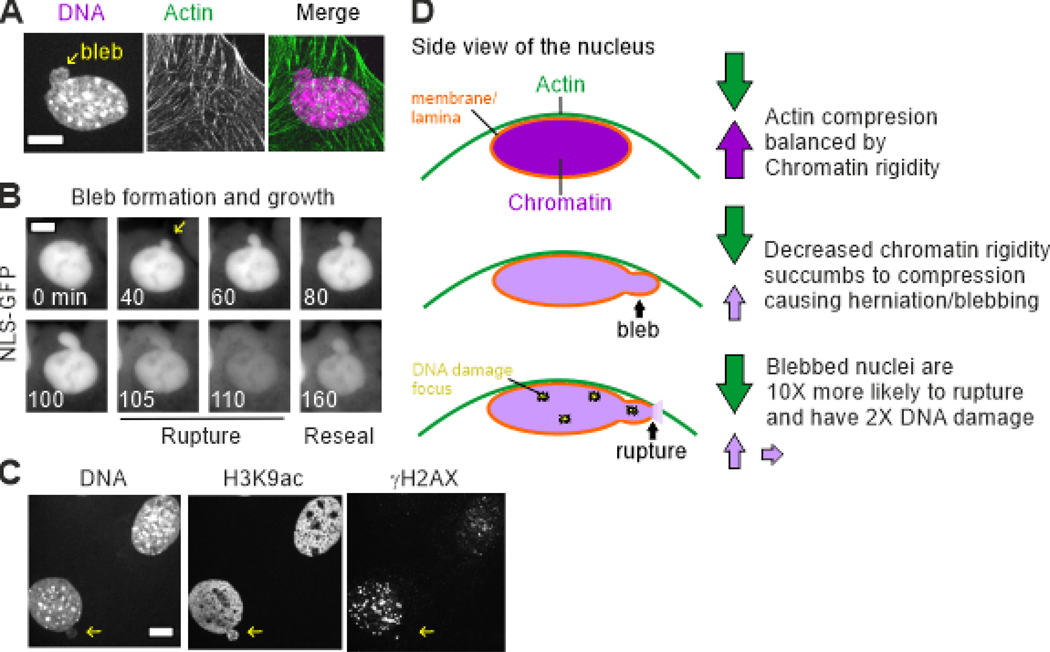Figure 1.
Decreased chromatin-based nuclear rigidity results in nuclear blebbing, rupture, and DNA damage. (A) An example image of a blebbed nucleus due to decreased chromatin-based nuclear rigidity caused by treatment with histone methyltransferase inhibitor DZNep to decrease levels of heterochromatin. An example image of chromatin labeled with Hoechst and actin labeled with phalloidin. The image shows how actin cables run over the top of the nucleus. (B) Example time-lapse of nuclear bleb formation and rupture shown by imaging nuclear localization signal green fluorescence protein (NLS-GFP). Time is in minutes. Rupture is indicated by the spilling of NLS-GFP into the cytoplasm. (C) Example image showing that blebbed nuclei display higher levels of DNA damage marker γH2AX. (D) Side view schematic showing that chromatin rigidity resists actin (shown), and other cytoskeletal forces, to maintain normal nuclear shape and compartmentalization. Loss of chromatin-based nuclear rigidity results in actin compression forces overcoming nuclear rigidity forces resulting in a herniation and rupture of the nucleus leading to spilling of nuclear contents thereby allowing cytosolic contents into the nucleus, DNA damage, transcription changes, and cell cycle disruption.

